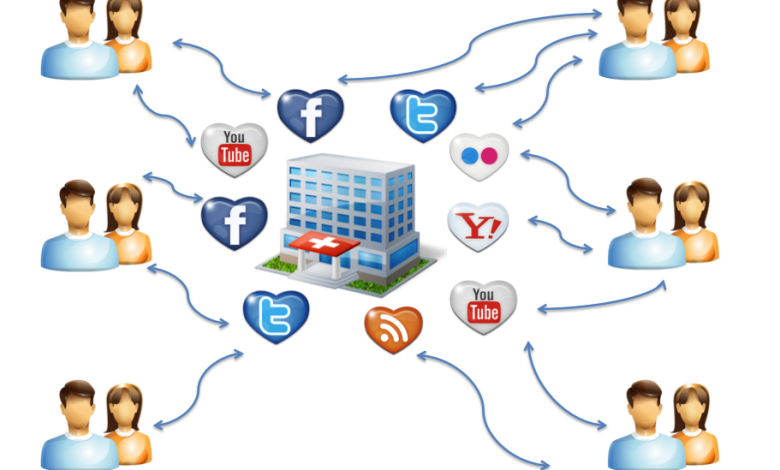
The need to carry out Social Media Marketing in Healthcare, in addition to being a need for the company, is also a duty toward Users-Patients: it is estimated that over 30% of the population uses the Internet to carry out self-tests and to seek information on their health.
Within the health communication and marketing strategies, Social Media Marketing in Healthcare also arises from the need to combat disinformation, educate patients and help them recover.
While it is impossible to prevent users from resorting to the Internet regarding their health, you can work to spread authentic content against ‘fake news,’ allying with Doctor Google and making the most of social media in your marketing strategy.
Here are seven social media marketing tips for healthcare companies
Be consistent in your message
Communication on social media is immediate and bidirectional and establishes a direct relationship with the Users-Patients. If this is a good aspect from many points of view, it deserves particular attention in its realization.
On the Social Media used for Healthcare, there is a risk of confusing messages and languages precisely because of their intrinsic “simplicity.” Despite the specifics of each platform, it is important to maintain a clear and consistent communication channel.
Your healthcare facility and brand must always be recognized at the base of every communication. As with any company, visual aspects such as logos and colors are essential to create your identity and help patients remember you.
Your Medical Center – Outpatient Clinic – Practice must, then, be recognizable in the services it offers and in the competence of the healthcare staff. Still, above all, the results can guarantee to patients. For this purpose, a good healthcare marketing agency can set the message on the “after,” or rather on the results and benefits that patients obtain after entrusting themselves to the care of your medical center.
Another fundamental characteristic of social media is spontaneously creating a virtual community, which is even more true when the unifying element is health. Use this potential to convey a message of trust and reassurance so that your patients perceive you as the foremost expert in the sector and the only center to which they can entrust their most precious asset. Storytelling
is one of the most useful tools for creating engagement on social media. By telling concrete cases, difficulties, and stories of patients and doctors, bonds with the community are strengthened, making emotional connections that also help fortify one’s reputation.
Social Media for Health needs an editorial plan
An effective healthcare social media marketing strategy cannot be improvised. It must follow a regular schedule and be developed by a professional in the sector.
On social media, every action has a very short, almost immediate response time, so you can’t think of opening profiles and pages and updating them only when you have time.
Each social platform has its specificities, with a specific language and audience. Therefore, the posts must be differentiated based on these specificities in the contents ( textual or visual, formal or informal tone of voice, etc. ) and the publication calendar.
When scheduling your posts, follow the 80/20 rule, according to which 80% of seats are informational and 20% promotional. Informative posts are for educational purposes and can be health updates, news from your blog, and health tips. The characteristic of this type of content is that they are highly shareable, especially if they are posts with a visible part. On the other hand, promotional posts give specific news about your center and services.
A useful tip for scheduling content on social media is to take advantage of media events, such as “Diabetes Prevention Week” or “World Celiac Day.” It is a way to undertake effective health communication campaigns, with informative and promotional content for your center, for example, while providing a link to your site to book an appointment.
Use visual content such as images and videos
Our brain processes visual information more easily. According to the latest statistics, 80% of the information our brain stores is visual, 10% textual, and 20% auditory.
For this reason, social media extensively uses photos, videos, and gifs to include in posts. Facebook’s algorithms, for example, reward visual content, which on average receives 94% more views than just written posts.
A good healthcare social media marketing strategy must include visual content marketing to fortify patient relationships and improve brand awareness.
Through the power of images, the healthcare facility can convey messages of trust, hope, and understanding of their patients’ feelings in a much stronger way than with words alone.
Remember that over 80% of social media traffic is mobile, so optimize your visual content for all devices. The attention on the web is much lower, and users do not like to waste time trying to understand a site or a social profile that does not work. Instead, they change the page.
Advertise for a fee
In addition to organic promotion, you could also use social media sponsorship campaigns.
In fact, with paid advertising, you can reach a very high number of potential users, taking advantage of the ability to profile in detail the target audience of the ads and reach your ideal target.
On the contrary, detailing the characteristics of your ideal recipients allows you to make your message more effective, meeting the needs of the people who are very likely to need you and your services.
Use social media in Healthcare to manage crises
Due to its immediacy, communication on social media is a sounding board, both positively and negatively. Remember that users tend to give more weight to negative situations, amplifying each event out of proportion. Think about the process of leaving a review: in 8 out of 10 cases; users write a comment when their experience is negative.
If you make a mistake, use social media to avoid risking your credibility.
Do not underestimate the emotional burden this can have, even if the negative event was inevitable.
Finally, consider the opportunities offered by proper crisis management on social media:
- reputation strengthening;
- consolidation of the sense of belonging;
- learning for future crisis management;
- implementation of improvements.
Social Media in Healthcare (Facebook, Instagram, etc.) which social media to use?
The answer is everyone! There is no social media that is more performing than another.
Furthermore, as we have seen, each social media marketing for healthcare has its language, audience, and internal rules.
There are health structures that lend themselves more than others to multi-channel communication. For example, a physiotherapy office or a dental clinic are perfect structures to benefit from social media. Facebook is great for sharing your blog articles; Linkedin is ideal for updates or to share your participation in sector events and conferences.
Rely on healthcare marketing professionals
Therefore, in the design phase, you must also foresee the budget for health marketing activities. Otherwise, you risk losing the reliability acquired over years of work. We have seen how much negative criticism can resonate in the web world. Do you want to risk it?
Consider all the benefits of professional health social media management:
- strengthen your reputation by increasing your credibility;
- reaches a large number of new potential patients;
- use positive reviews to create engagement and retain current patients;
For more articles please visit here



